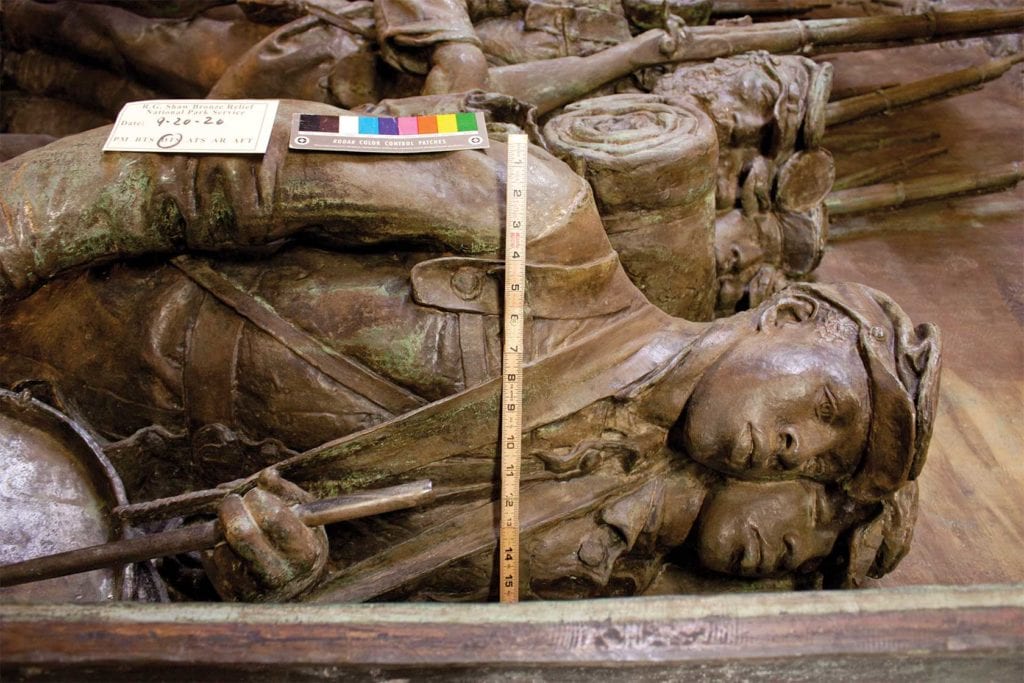
Eleven miles outside of Boston, the Robert Gould Shaw and Massachusetts 54th Regiment Memorial lies on its heavy bronze back in Skylight Studios in Woburn. The famous August Saint-Gaudens sculpture and the stone structure that ensconced it are undergoing a restoration as part of a $3 million repair project organized by the Friends of the Public Garden in partnership with the National Park Service, the City of Boston and the Museum of African American History. This is the first time since its installation in 1897 that the sculpture has been removed from the site.

The Robert Gould Shaw and Massachusetts 54th Regiment Memorial is undergoing restoration at Skylight Studios in Woburn. PHOTO: SKYLIGHT STUDIOS
Barbara Mangum, the bronze conservator overseeing the work on the memorial, says, “The goal of conservation, as opposed to restoration, is to present it as close as possible to the artist’s vision. But you’re not trying to erase all the numbers of years that have occurred.” When the sculpture returns to its home on the Boston Common in November it won’t look brand new, but it will be cleaned and protected against the elements.
In many cases, the repairs are done as closely to Saint-Gaudens’ own process as possible. For example, welding had not yet emerged as a tool for bronze sculptors at the time, so each section of the work is secured at the seams with bolts. Fortunately, these are mostly intact, but those that did need repair were again secured with bolts rather than a more contemporary welding process.
The restoration process has required a bit of artistic detective work. “We didn’t know how the piece was in the stone, if it was free standing or had been tied into the stone,” says Mangum. It wasn’t until the monument was physically being removed that they discovered brick and mortar at the base grounded it.
The bulk of the work on the bronze is in repairing corrosion that has occurred due to acid rain and other weather elements. This is what turns bronze green. Robert Shure, sculptor and president of Skylight Studios, who is leading the work on the monument, is carefully cleaning the bronze, repairing the patina and applying Incralac, a coating that will protect the sculpture from rain and other elements for years to come.
The stonework is undergoing a similar process; it will be cleaned, repaired where necessary and fortified for the future. Ivan Myjer, the stone conservator overseeing the process, estimates that only about 20% of the stones need repairs. “It should be stable for another hundred years after this,” he says.








